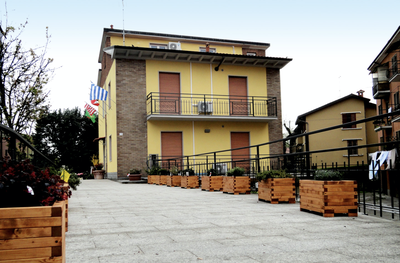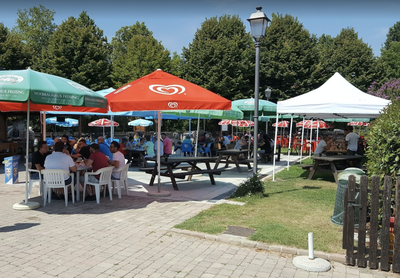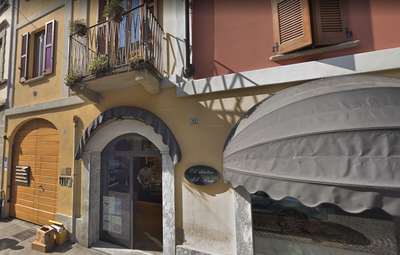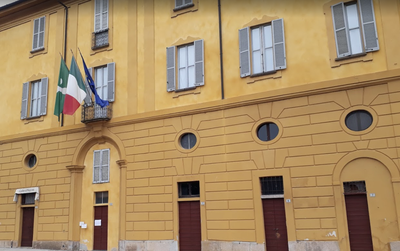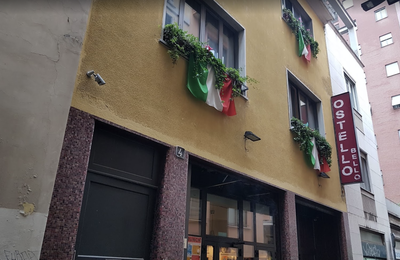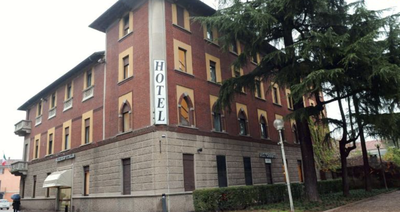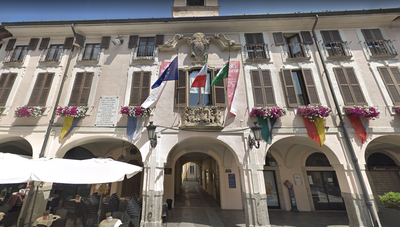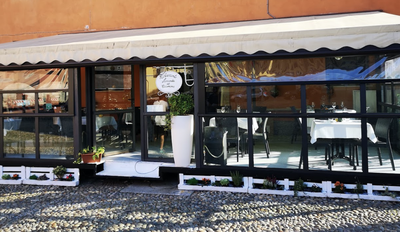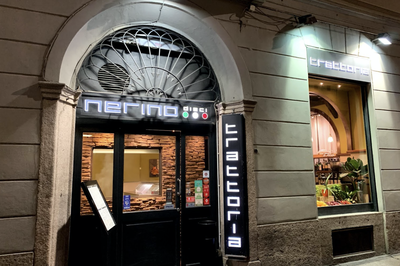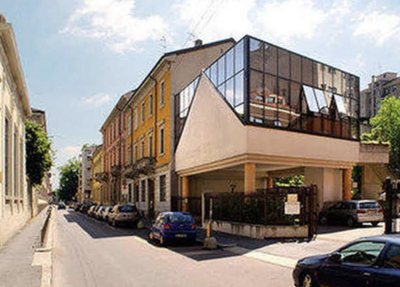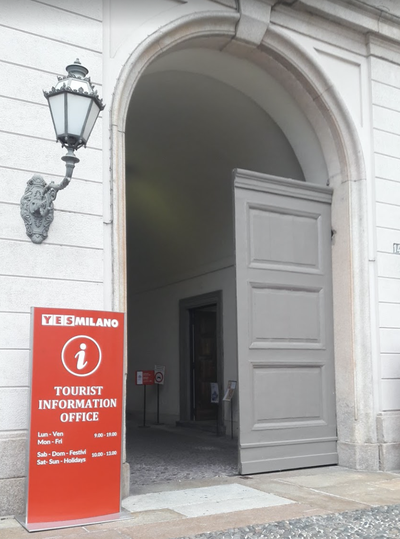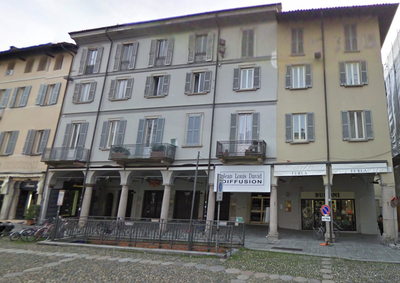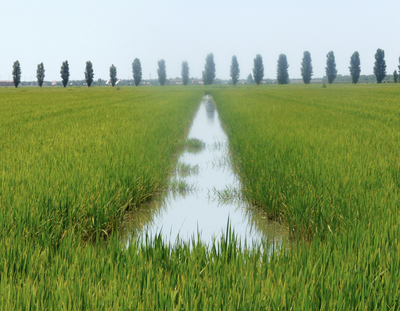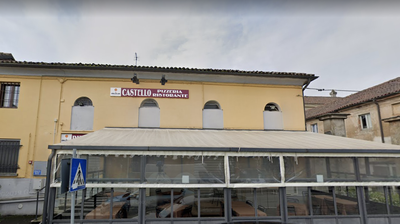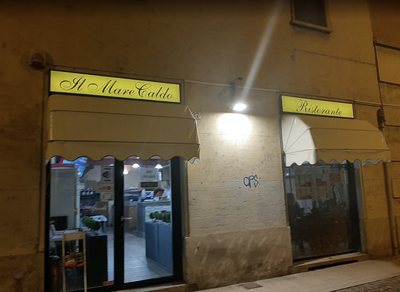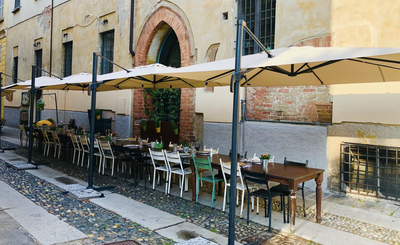
5. Milano to Pavia
19 points of interest

Milano St ColumbanBasilica Sant'Eustorgio
Probably founded in the 4th century, it is dedicated to Archbishop Eustorge I of Milan who is said to have initiated the translation, in 344, of the relics of the Magi from Constantinople. Another witness to the site's antiquity: in 1764, during the demolition of an old pillar, a Christian tomb was discovered, with pieces bearing the effigy of Emperor Constantine I, son of Constantine.
The church was later rebuilt in the Romanesque style. In the 12th century, during the sack of Milan by Frederic Barbarossa, the relics of the Magi were taken to Cologne. It was not until the 1900s that some relics were returned, now resting in the altar of the Magi, near their sarcophagi. The bell tower is also surmounted by a star instead of the traditional cross.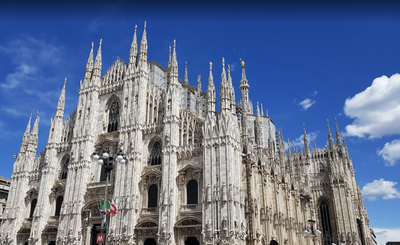
Milano HistoricalMilan Cathedral
One of the largest cathedrals, an emblematic masterpiece that took more than 600 years to build.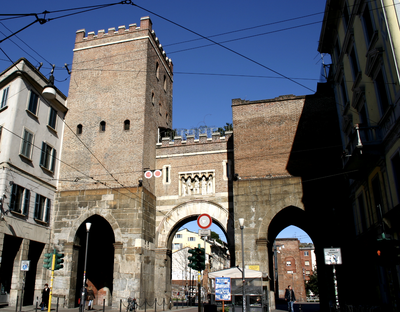
Milano HistoricalMedieval Porta Tinese
The Porta Ticinese is, together with the Porta Nuova, one of the two remaining gates of the medieval city walls. It is located on the Cerchia dei Navigli, which follows the route of the medieval ramparts of the city.
Built in the 12th century, the Porta Ticinese was extensively restored in 1891 by the architect Camillo Boito, who added two arches on either side of the original arch.
Milano HistoricalColumns of San Lorenzo
Roman columns.
Milano CulturalBasilica San Lorenzo Maggiore
In the 4th century, San Lorenzo was located outside the ramparts, not far from the amphitheatre, the imperial palace and the circus, along Via Ticinensis, which linked Pavia to Milan and was the most important access route to the city. For those who arrived in Milan, the Basilica, with its dimensions, was presented as "the most imposing building with central symmetry in the Christian West".
Milano TouristLavandai Alley
A crevice in the Naviglio Grande preserves intact a washhouse from the 1900s, a place unknown to the Milanese that was used by laundress to wash clothes until the early 1950s.
Milano CulturalChurch of San Cristoforo sul Naviglio
The complex consists of two churches, the oldest of which is the one on the left. However, the absence of a historical document does not allow us to date its origins. The facade was added in the 14th century with a portal and a rose window.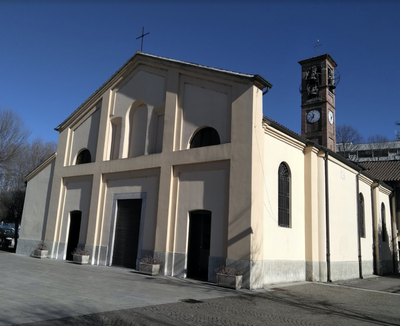
Trezzano sul Naviglio CulturalChurch of San Ambrogio
The church of Sant'Ambrogio probably dates back to the period between 1130 and 1170. The frescoes in the church bear witness to the link with the territory: the inhabitants kneeling under the mantle of the Virgin (fresco under the Luini altar in the 15th century), the miraculous appearance of Saint Ambrose (fresco in the apse in the middle of the 16th century). The church is rich in precious examples of the Lombard Renaissance style.
Gaggiano CulturalChurch of San Invenzio
Built in 1618, the present church certainly has more distant origins because it is mentioned in documents from the 12th century. It was extended later in 1758. Inside there are 19th century frescoes, but above the altar of the Virgin Mary, to the left of the entrance, there is a precious 15th century fresco depicting the Virgin of the Graces to the Child, which has been the destination of important pilgrimages because it was considered miraculous.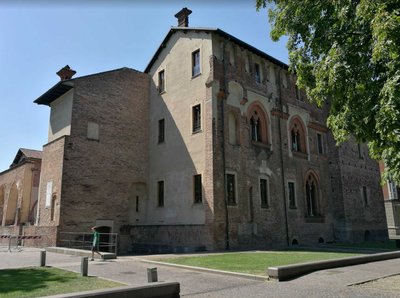
Castello Visconti - Amis St Colomban HistoricalVisconti Castle
The thirteenth-century Visconti Castle of Abbiategrasso was built in 1381 by Gian Galeazzo Visconti and embellished after 1438 by Filippo Maria Visconti. It was strategically built in line with the Naviglio Grande and the Milan-Vigevano road.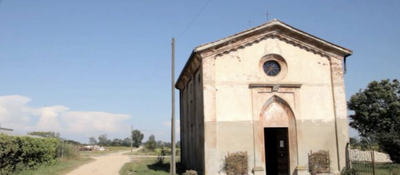
Oratorio San Francesco CulturalOratory Cascina Bugo San Francesco
The oratory is dedicated to San Francesco and probably dates from the 15th century. Located near the Bugo farm, the church, with a single room, a gable roof and a small bell tower, is an interesting example of a 15th century rural oratory. First dedicated to the Holy Crucifix, it was baptized after the plague of 1576 according to Saint Sebastian, but the date of Saint Francis' dedication is not established. The interior has a ceiling of exposed beams and a square apse with a vaulted ceiling and preserves a remarkable fresco, recently restored, attributed to the 15th century.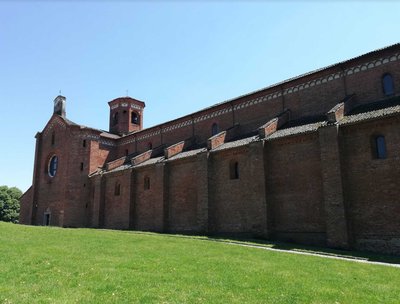
Abbazia Morimondo HistoricalAbbey of Morimondo
The monastery of Morimondo, a name that means "to die in the world", i.e. "to live as if resurrected", was founded in 1134 in Coronate, a place that still exists about a kilometre from the abbey, by monks from the Cistercian monastery of Morimond in France. In 1136 they moved to "Campo Falcherio", the present seat. In a short time, the monastery grew in importance and received many vocations from all social classes. Even before the construction of the church, the monks founded two other communities: in 1143 Acquafredda (Como) and in 1169 Casalvolone (Novara). A remarkable and eloquent sign of the richness of vocations is witnessed by the flourishing activity of the scriptorium. From an agricultural point of view, too, there was considerable expansion with a large number of barns, oratories and mills situated on a territory of about 3200 hectares in the 13th century, two thirds of which were cultivated fields and one third woods.
Bereguardo HistoricalCastle of Bereguardo
Bereguardo Castle, first Visconti, then Sforza, stands in the centre of the village, on a natural terrace overlooking the Ticino, surrounded by the remains of the old moat that drew water from the nearby Naviglio.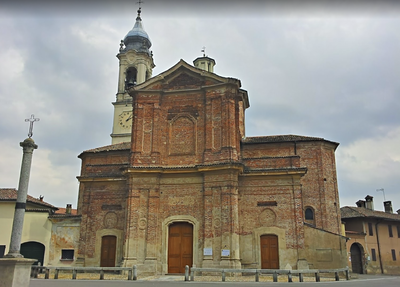
Bereguardo CulturalChurch of Sant'Antonio Abate
The parish church, dedicated to S. Antonio Abate, stands on the former grounds occupied by a chapel built by the Visconti family in 1425. The current building was built around 1762, with a Greek-Latin cross plan topped by a beautiful octagonal dome. The facade is made of bare bricks and contrasts with the richly decorated interior in the Baroque style, where the pulpit carved in wood with canopy stands out. To the right of the main altar is the chapel dedicated to the Virgin of the Rosary, while the two minor altars, decorated with beautiful stuccoes, are dedicated to Saints Mauro Abate and Bernardino da Feltre and the other to Saint Rocco, patron saint of the city. The church is dominated by a bell tower more than 40 meters high with a Byzantine dome.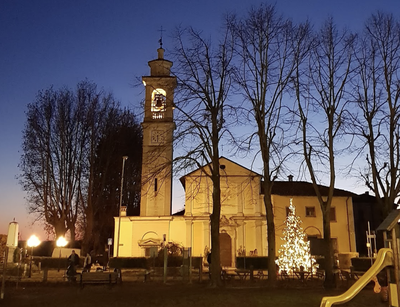
Chiesa Santa Maria della Neve CulturalChurch of Santa Maria della Neve
The church is mentioned in a document for the first time in 1558 when the parish of Trivolzio was entrusted to the fathers of the Third Franciscan Order and reappeared in 1630 when the vicar of Trivolzio wrote that under his jurisdiction was the church of Santa Maria della Neve in Torre d'Isola. From 1703, on the order of the Marquis Giacomo Botta, the church was enlarged and inaugurated on 31 October 1706. In 1783, when the convent of Trivolzio was closed by Emperor Joseph II, it became a parish church.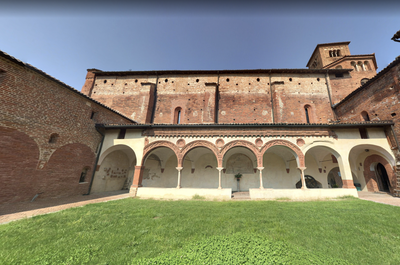
Chiesa San Lanfranco CulturalChurch of San Lanfranco
The documents mention 1090 as the date of foundation. In this area in 773, King Charlemagne of the Franks camped to besiege Pavia and defeat the resistance of King Lombard Desiderius. A new church of the Holy Sepulchre was built around the second decade of the 12th century, as mentioned in the writings of Bernard de Pavie. Its construction was the work of the Vallombrosani, a community of Benedictine monks founded between 1012 and 1015. In the tradition and spirit of these monks, it was a question of choosing isolated places but close to important centres, to encourage meditation and, at the same time, preaching. The church was therefore located outside the city, but along a path travelled by travellers and pilgrims who could find hospitality in the convent.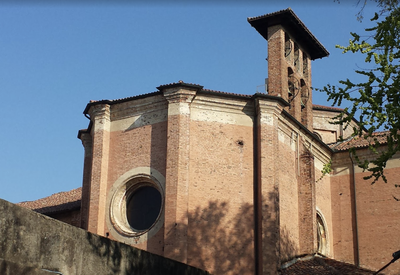
Basilica Santissimo Salvatore CulturalBasilica of the Holy Savior
The Basilica of Santissimo Salvatore, commonly known as the Basilica of San Mauro, is a church in Pavia. Founded in 657 by the Lombard king Ariperto I, it became a funeral church for many Lombard kings. It was first rebuilt in 970 by Queen Adelaide, who founded the monastery of San Salvatore next to the church and entrusted it to a Benedictine community. In the second half of the 15th century, the current basilica was built on the site of the old medieval church. Between the 15th and 16th centuries, the church was richly decorated with frescos and interior decorations. In the 18th century, the church and the adjoining monastery were transformed into a barracks and military warehouse. The church was recovered and reopened for worship on May 21, 1901.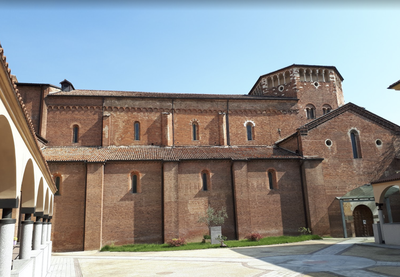
Basilica San Pietro in Ciel d'Oro CulturalBasilica of San Pietro in Ciel d'Oro
Built at the beginning of the 7th century in the middle of the Lombard era, the Basilica of San Pietro in Ciel d'Oro has the dignity of a secondary basilica. Built in Lombard style, then rebuilt in Romanesque style in the 12th century, the primitive Christian basilica, Saint Peter in Ciel d'Oro, so called because of its golden ceilings, was built on the site where Saint Séverin, Roman philosopher and senator killed by King Theodoric the Great in 525 was buried. The Basilica is an outstanding example of Lombard Romanesque architecture, generally considered, together with the Basilica of San Michele Maggiore, to be the most important medieval religious monument in the city of Pavia. Restored by Pope Innocent II in 1132, it claims great prestige in the Catholic world because it houses the remains of Saint Augustine.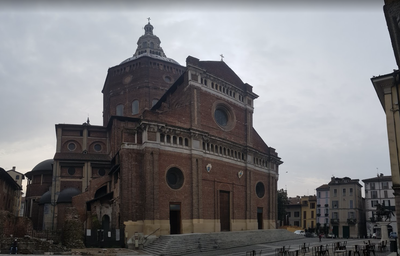
Duomo CulturalCathedral of Pavia
The construction of the cathedral began in 1488 on the site of two former Romanesque cathedrals, Santo Stefano and Santa Maria del Popolo. The original project, with a nave and two wings flanked by semi-circular niches and a central dome, is influenced by Bramante. Leonardo da Vinci is said to have contributed to the project. A 78 m high belfry (Torre Civica) originally flanked the cathedral. Mentioned since 1330 and expanded in 1583, it collapsed on March 17, 1989. His remains are still visible on the left of the cathedral.
Description
From the cathedral, reach the corner of the square to the left of the statue of Vittorio Emanuele II and cross via Grefici to reach via Torino which extends the diagonal of the square:
- Go down this shopping street with department stores to its end after a large curve on the right and then on the left. Via Torino ends at a bank (Unicredit): take the left street that turns south (corso de Porta Ticinese). Admire the Roman columns of San Lorenzo and cross the Tinese Medieval gate with its tower. Continue along the same street now lined with small shops until its end marked by a reproduction of a Greek temple. Pass on the right of the monument, cross the end of the canal (Darsena del Naviglio) and turn right on the viale Gorizia which crosses a first canal coming from the South then another one facing West. Cross the latter and follow its left bank (Alzaia Naviglio Grande). The narrow road along the canal passes under a first ring road (via Cassala) and then under railway tracks.
- Continue to follow this very straight bank of the canal and pass under a major artery (Cavalcavia Lorenzo Milani). The canal gradually turns southwest, passes again under a busy road (via Pietro Giordani) and crosses the residential city of Corsico before ending in the countryside to the A50 motorway.
- After passing under the motorway, the small road becomes a bicycle / pedestrian track and returns to the countryside at the exit of the last big city Trezzano sul Naviglio. At the entrance to the next village (Gaggiano), cross the canal by the footbridge and now walk on the other side. Pass the villages of Vermezzo on the SP30.
- The canal continues towards Castelletto where it crosses another canal and then joins the surroundings of Abbiategrasso.
- The track and canal bend to the left to turn southeast. The track crosses a road that joins the industrial area (right) and the hamlet of Caselle di Morimondo (left). Continue up to the next asphalt road on the right. This path by a round trip allows you to visit Morimondo and its abbey.
- At the end, continue along the canal, pass by the bridge of Sassi at Cascina Conca. Continue on the track and cross small paved roads at Cascina Fornace, Cascina dell'Acqua and Cascina Caiella on the SP190 which connects Motta Visconti to Casorate Primo.
- Continue along the edge of the canal that passes near other farms (Cascina Morona and Fornaseta). At the entrance to Bereguardo, the canal changes direction. Continue along the canal to the village centre. At the end of the road, turn right, pass by the war memorial and join the main street via Ticino or SP185, follow it until you leave the village and take the street on the left (via della Roveda or SP130). This road crosses the countryside and then crosses the A7 motorway on a bridge.
- The SP130 road then crosses the hamlets of San Varese, Casottole and Torre d'Isola. It approaches the Ticino River, which is only seen near Pavia. The arrival in Pavia is marked by the passage under the A54 motorway, the crossing of a suburb and a river by the via Riviera.
- Continue along via Riviera which enters the city, passes under the railway tracks to become Corso Alessandro Manzoni up to a roundabout with a statue of Minerva. Continue in the axis (Corso Camillo Benso Cavour), leave the courthouse on the left and turn right into via Jacopo Bossolaro to go to the cathedral.
- Departure : Cathedral of Milano, piazza del Duomo, 20122 Milano
- Arrival : Cathedral of Pavia, Piazza del Duomo, 27000 Pavia
- Towns crossed : Lombardia
Altimetric profile
Report a problem or an error
If you have found an error on this page or if you have noticed any problems during your hike, please report them to us here:
Close by17
- Information
- Information


